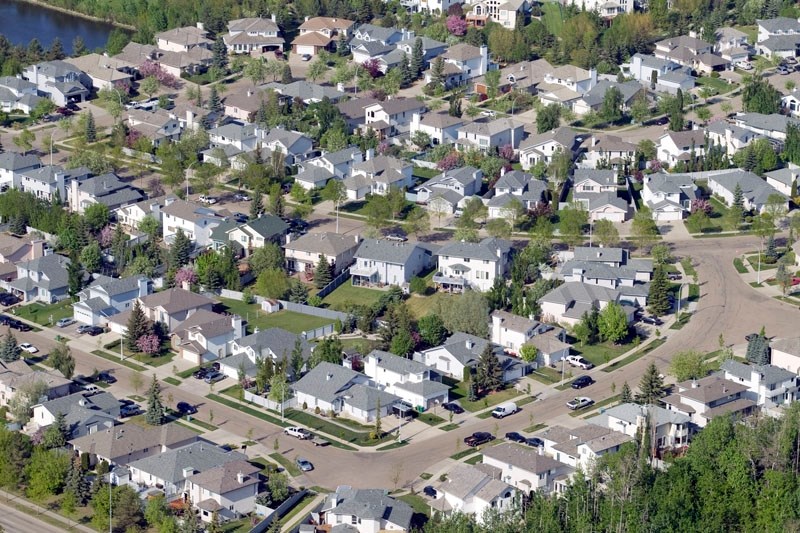St. Albert's housing personality is on the move. Known for big houses and big lots, St. Albert is no longer a bedroom community.
"It's a city in its own right," said Greg Christenson, president of Christenson Developments, a firm that has been building in St. Albert for 30 years.
Christenson made his assessment based on all the amenities to be found in this city.
"The city has changed and grown. It has a hospital, its own shopping centres and it has diversity of housing," he said.
Presently St. Albert's population is 60,000. Of those people, 24 per cent are between the ages of 25 and 44, and this age group is already having a significant impact on how housing develops here.
James Mabey, agent/owner at Sutton Real Estate, worries that St. Albert does not have enough housing for that generation.
"Right now the bulk of St. Albert housing is around $400,000-plus. In real estate we have this expression, drive 'til you qualify. I don't see a lot of diversity in St. Albert," he said, arguing that the city needs more housing variety in order to retain its younger population.
"If the young purchaser moves from St. Albert because they cannot afford to live here, they won't come back. Traditionally those buyers stay where they buy their first home and we don't have a lot of entry-level housing here," Mabey said.
Historical perspective
Between 1951 and 1975 the population of St. Albert grew from 1,129 people to 23,000. Along with the baby boomers came row after row of bungalows, which sprang up like marigolds in a cultured garden.
As they built equity in their homes, some of those baby boomers moved up to the bigger houses in Woodlands, Erin Ridge, Oakmont and Kingswood, but for the most part, whatever house those folks have lived in for the past 10 years remains their family home and they aren't moving.
Christenson, who primarily builds housing for older adults, has watched the trend carefully, and also argues that the city must provide for the younger demographic.
"As a community you have no choice because the seniors are not moving," he said, emphasizing that in Edmonton older neighbourhoods are dying.
"Schools are closing in older neighbourhoods in Edmonton. You need to fill the schools in St. Albert," he said.
Christenson even went so far as to predict that in time the nature of neighbourhoods such as Erin Ridge and Kingswood could change as the demographic shift occurs.
"As the population ages, you will need affordable housing for those who are caring for seniors. It's possible, as has happened in other cities such as Toronto or Vancouver, that the McMansion in Kingswood will be transformed into boarding houses."
In the works
In its municipal development plan of 2007 the city decreed that future St. Albert neighbourhoods would have a ratio of 70 per cent single-family housing to 30 per cent multi-family dwellings.
That same year city council amended the land use bylaw to allow basement suites and homeowners may apply for grants up to $15,000 to develop or upgrade suites in their homes.
City council also supported Habitat for Humanity projects in North Ridge and Akinsdale. New condo/apartment style housing will be built with the 118 unit Big Lake Pointe scheduled for construction over the next three years and the 120 unit Lions Village, which is in the first stages of construction now.
Big lots
"Lot size will determine the character of the new neighbourhoods," said Royal LePage realtor Wayne Kinsella, who is also a retired homebuilder.
The land use bylaw allows for 50 per cent of the lots to be wider than 14 metres, and that will mean half the homes in those new areas northwest of St. Albert will be big, Kinsella explained.
"It's a trade off because St. Albert needs taxes and of course bigger houses bring in more taxes. Fewer houses on a street also need less servicing," he said.
Kinsella pointed out that once a lot is purchased for between $200,000 and $250,000 and then serviced for a further $100,000 or more, it doesn't make sense to build a small house on a big lot.
"The amount of house you put on the dirt is significant. You wouldn't build a $200,000 house on that lot," he said.
But Mayor Nolan Crouse explained that while developers and builders may wish to build more smaller homes on smaller lots, that is not always what the buyers or community desires.
"If you build smaller houses on smaller lots, you have fewer trees, no place to park and no place to put light standards and fire hydrants. In Forest Lawn you have 20 trees for 20 houses. In some of the newer, small-house neighbourhoods you get 11 trees for 20 houses. People want the trees," Crouse said.
As he looked at St. Albert's present housing availability and future, Crouse admitted there are gaps.
"I would say right now there are significant gaps. We need to widen the options, and we are diverse, but perhaps not diverse enough," he said.
The greatest need is for more group housing and more affordable seniors housing such as that found in Chateau Mission Court, he said.
"It takes community and political will to build that type of housing," Crouse said.
Crouse said the city's demographics prove that the younger generation is moving back, and that they are more prepared than their parents were to move into townhouses and condominiums.
"Those young people are coming back. In 20 years you're going to see more diversity. The kids are going to want townhouses and condos and because it's supply and demand, that's what you are going to see," Crouse said.
"St. Albert will not change its character," Christenson said. "It will keep its tree-lined streets and its famous farmers' market. It will keep the things that define St. Albert as a community, but it will need a more balanced community too with businesses and sustainable housing."




